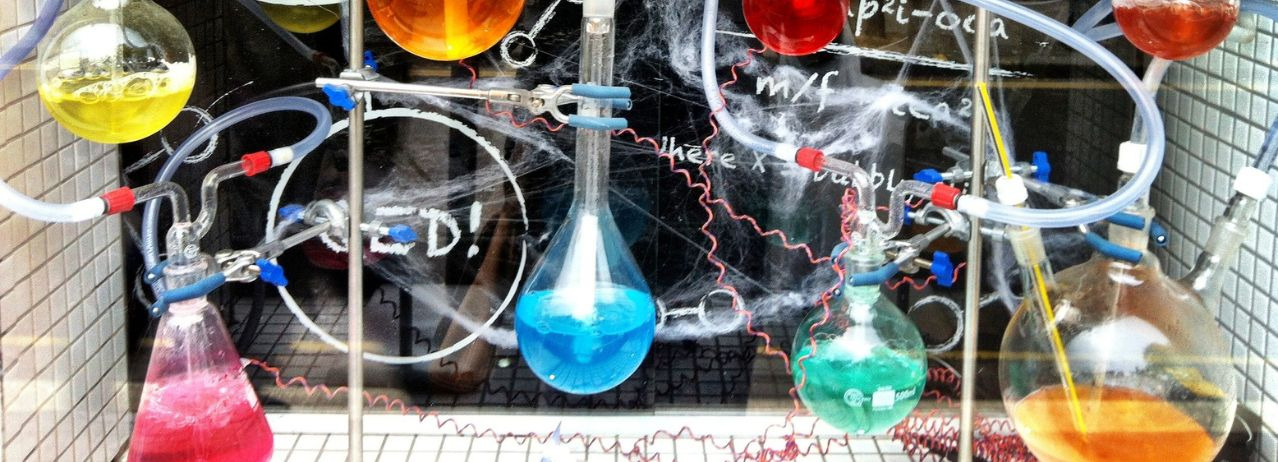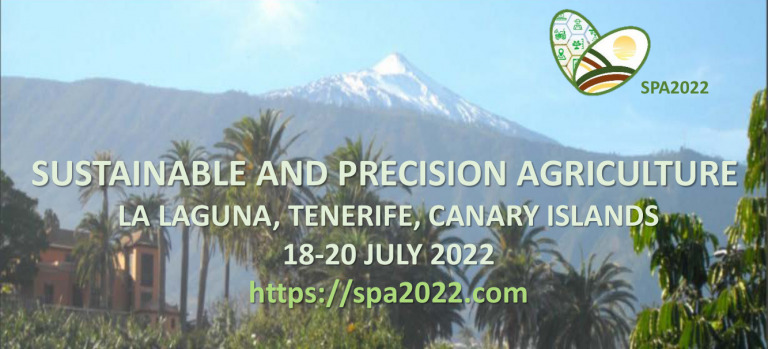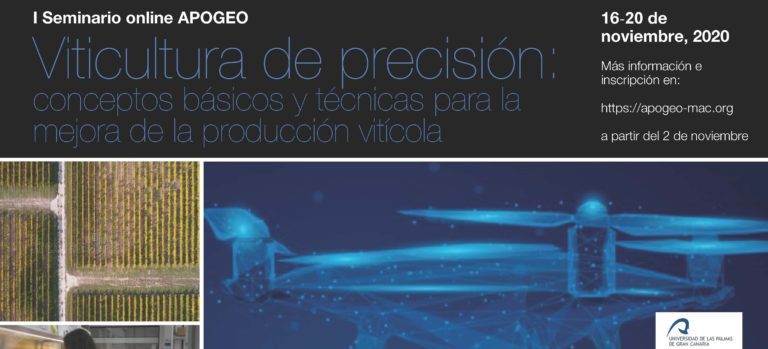
Latest News
Here you will find the latest news on research, events, activities and new findings at the Institute of Natural Products and Agrobiology.
Upcoming Events
Publicaciones recientes
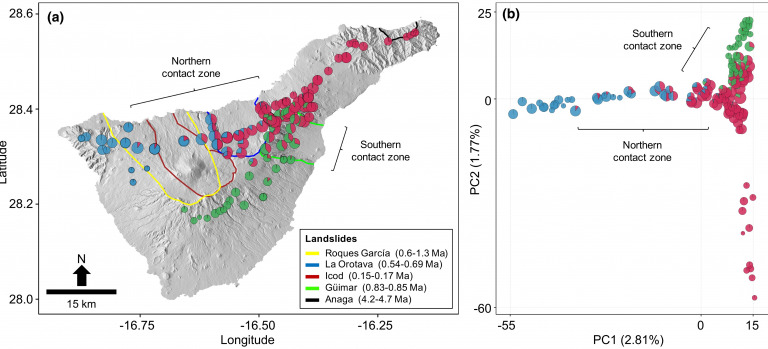
Genetic legacies of mega-landslides: Cycles of isolation and contact across flank collapses in an oceanic island
Catastrophic flank collapses are recognized as important drivers of insular biodiversity dynamics, through the disruption of species ranges and subsequent allopatric divergence. However, little empirical data supports this conjecture, with their evolutionary consequences remaining poorly understood. Using genome-wide data within a population genomics and phylogenomics framework, we evaluate how mega-landslides have impacted evolutionary and demographic history within a species complex of weevils (Curculionidae) within the Canary Island of Tenerife. We reveal a complex genomic landscape, within which individuals of single ancestry were sampled in areas characterized by long-term geological stability, relative to the timing of flank collapses. In contrast, individuals of admixed ancestry were almost exclusively sampled within the boundaries of flank collapses. Estimated divergence times among ancestral populations aligned with the timings of mega-landslide events. Our results provide first evidence for a cyclical dynamic of range fragmentation and secondary contact across flank collapse landscapes, with support for a model where this dynamic is mediated by Quaternary climate oscillations. The context within which we reveal climate and topography to interact cyclically through time to shape the geographic structure of genetic variation, together with related recent work, highlights the importance of topoclimatic phenomena as an agent of diversification within insular invertebrates.
Noguerales, Víctor; Arjona, Yurena; García-Olivares, Víctor; Machado, Antonio; López, Heriberto; Patiño, Jairo; Emerson, Brent C.
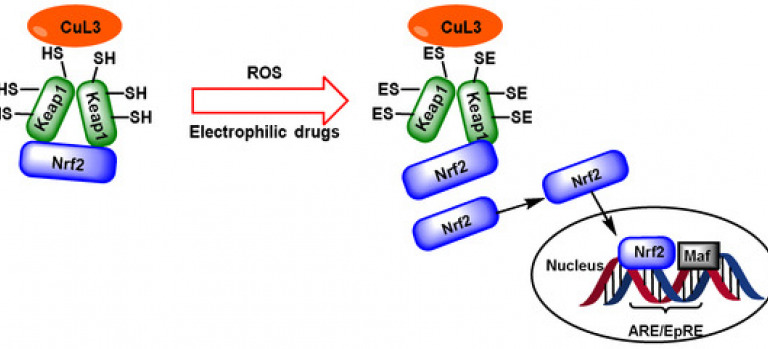
Electrophilic Compounds in the Human Diet and Their Role in the Induction of the Transcription Factor NRF2
The phrase “Let food be thy medicine…” means that food can be a form of medicine and medicine can be a form of food; in other words, that the diet we eat can have a significant impact on our health and well-being. Today, this phrase is gaining prominence as more and more scientific evidence suggests that one’s diet can help prevent and treat disease. A diet rich in fruits, vegetables, whole grains, and lean protein can help reduce the risk of heart disease, cancer, diabetes, and other health problems and, on the other hand, a diet rich in processed foods, added sugars, and saturated fats can increase the risk of the same diseases. Electrophilic compounds in the diet can have a significant impact on our health, and they are molecules that covalently modify cysteine residues present in the thiol-rich Keap1 protein. These compounds bind to Keap1 and activate NRF2, which promotes its translocation to the nucleus and its binding to DNA in the ARE region, triggering the antioxidant response and protecting against oxidative stress. These compounds include polyphenols and flavonoids that are nucleophilic but are converted to electrophilic quinones by metabolic enzymes such as polyphenol oxidases (PPOs) and sulfur compounds present in foods such as the Brassica genus (broccoli, cauliflower, cabbage, Brussel sprouts, etc.) and garlic. This review summarizes our current knowledge on this subject.
Curieses Andrés, Celia María; Pérez de Lastra, José Manuel; Bustamante Munguira, Elena; Andrés Juan, Celia; Plou Gasca, Francisco José; Pérez Lebeña, Eduardo.
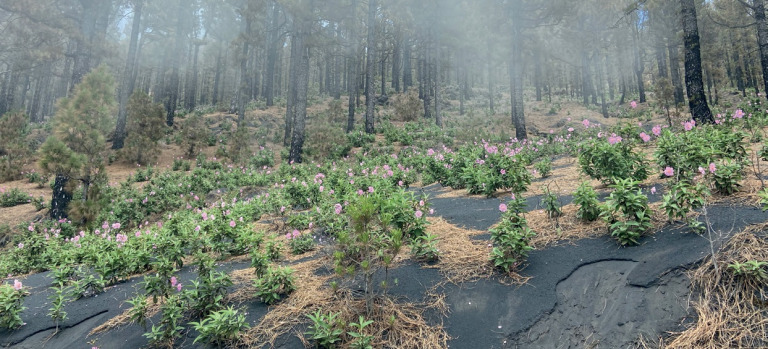
Resiliencia del pinar canario después de la erupción del volcán Tajogaite (La Palma, 2021)
Durante 85 días (19 de septiembre – 13 de diciembre de 2021), la isla de La Palma sufrió el mayor evento eruptivo desde que se tienen registros históricos. El volcán Tajogaite emitió una gran cantidad de materiales volcánicos y gases, afectando a la población, a la economía local y a la biodiversidad. Tres ecosistemas se vieron afectados: matorral costero, matorral termófilo y pinar canario, siendo este último el que resultó más dañado, especialmente desde el cráter hasta 7 km hacia el sur de la isla. A pesar de ser un hábitat ampliamente estudiado, nunca se había evaluado el impacto de una erupción volcánica sobre su biodiversidad. Este estudio se ha centrado en este ecosistema, a similar altitud del cráter, a lo largo de la dorsal de Cumbre Vieja. Los resultados muestran que la velocidad de recuperación del pinar es más rápida de lo que se pensaba, permitiendo entender mejor los efectos de una erupción volcánica sobre la biodiversidad canaria.
Guerrero Campos, María; Marrero Rodríguez, Patricia; García Becerra, Rafael; Miranda García-Rovés, José Carlos; Domínguez Flores, Tania; Chano González, Víctor; Fariña Trujillo, Beatriz; Nogales, Manuel; Manuel Medina, Félix.
Blog
The IPNA blog gathers informative articles on the different research projects developed in the centre, the latest advances in science and other topics of interest regarding scientific culture.
